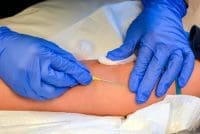Hot flashes and night sweats, after menstrual irregularity, are the most common symptoms of menopause and can be the most disruptive and disabling. I call these vasomotor symptoms the symptom of theories, because despite all our efforts, we simply do not know their precise cause.
Of course, not knowing the exact cause means that we cannot design the best treatment. But we do have much to offer.
BRAIN FUNCTION – BODY TEMPERATURE CONTROL
The brain is a sponge for hormones that in turn exert a multiplicity of effects. When present in normal amounts the sex steroids can trigger specific brain actions – when absent this ability is reduced or lost.
While many of these processes and conditions interact with each other, I will
consider specific conditions one by one:
Body Temperature Control: Sudden short-lived wide fluctuations in body temperature are the hallmark of menopause. Whether called hot flushes, hot flashes, night sweats, or their technical name vasomotor symptoms (VMS), they and their impact are the same. An episode of flushing, sometimes preceded by an early warning flash, is associated with a sensation varying from warmth to intense heat on the upper body and face. Perspiration follows as the body attempts to counteract by cooling, and as the perspiration evaporates, so there can actually be chilling and shivering. When these events occur during the night, they can disrupt sleep and are called night sweats. They can last up to 5 or 6 minutes or more, and are associated with remarkable temperature increases, as well as the heart beating rapidly (palpitations). They can be infrequent (weekly or monthly) or frequent (hourly). Reaction to them can vary from being a minor nuisance, all the way to a total disruptive influence on regular activities and living.
The second most common symptom of menopause after irregular periods, 75% of women are affected by VMS. This is a true “rule of quarters.” One quarter of women are not affected at all. Mild, moderate, or severe VMS, each account for a quarter of women. VMS can start several years before menopause and usually begin to decline in frequency and severity 2-3 years after menopause. Unfortunately, they do persist in some women for many years.
We do not know the cause of VMS , the “symptom of theories.” They occur more frequently in African-American women, followed by Hispanic, Caucasian, Chinese, and Japanese women. Of greater influence than race is body mass index (BMI). The greater the BMI, the higher the prevalence of VMS.
Those women who have early onset of menopause as a result of surgical removal of the ovaries, chemotherapy, or radiotherapy, are more likely to have the most severe form of VMS.
Never to be forgotten is that there are other causes for VMS. These include an overactive thyroid gland, epilepsy, hypertension, leukemia, and hormone-producing tumors such as of the adrenal gland and appendix. Certain drugs may also be the cause.
HEADACHE: Headache is a very common midlife complaint. Of the three kinds of headache, tension, cluster, and migraine, it is the latter that mostly drives people to the doctor’s office. Fortunately most headaches are not serious, which is not to minimize the negative impact they can have on quality of life, but some may indicate a more major underlying problem. A trigger mechanism can be identified in many cases, including various foods, stress, and environmental factors like noise or changes in the barometric pressure.
Ovarian hormones, however, affect one type of migraine. While there is no sex-related difference in incidence of headaches before puberty or after menopause, women between 25 and 55 have triple the number of headaches (18% vs. 6%). These headaches occur largely around periods, hence their being named menstrual migraine. These headaches may increase in severity during perimenopause, but usually wane after menopause.
TREATMENT OF VMS
This brings us right into the middle of the debate on hormone therapy after menopause, and I will dive right into this in great detail in future blogs. I will also discuss alternate therapies.
Have a great week!
Wulf Utian MD PhD DSc
Author; CHANGE YOUR MENOPAUSE – Why one size
does not fit all. http://www.amazon.com/Change-Your-Menopause-size-does/dp/0982845723/



















1 Comment.
Thank you so much for providing this information in such a clear and readily accessible format!!
I experienced menopause some 30 years ago and thought I knew what there was to know by virtue of my own experience . . . today, however, I inadvertently happened upon your site and am so much better informed for having done so. Wish I had known 30 years ago what I know thanks to you? Of course!
I am nevertheless glad to have it available now and able to share it with whomever might think she knows what there is to know about her own body. I was once there, too.